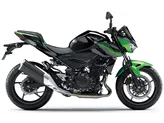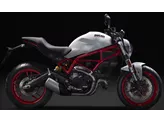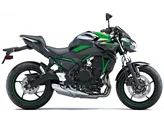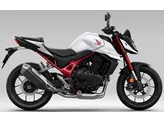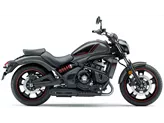Kawasaki ER-6n 2013 vs. Kawasaki Z650 2017

Kawasaki ER-6n 2013

Kawasaki Z650 2017
Overview - Kawasaki ER-6n 2013 vs Kawasaki Z650 2017
The Kawasaki ER-6n model year 2013 and the Kawasaki Z650 model year 2017 are both naked bikes with similar technical specifications. They both have an inline engine with a displacement of 649cc, liquid cooling, and two cylinders. The ER-6n has a slightly higher engine power of 72 HP compared to the Z650's 68.2 HP. However, the Z650 has a slightly higher torque of 65.7 Nm compared to the ER-6n's 64 Nm.
In terms of suspension, both bikes have a monoshock rear shock absorber. The chassis of the ER-6n has a steel frame, while the Z650 has a tubular frame. Both bikes have double disk brakes with double piston technology at the front, providing reliable stopping power. The front brakes also feature petal technology, which helps with heat dissipation.

Kawasaki ER-6n 2013
When it comes to dimensions and weights, both bikes have a front tire width of 120 mm and a diameter of 17 inches. The rear tire width is also the same at 160 mm, with a diameter of 17 inches. They both have a wheelbase of 1410 mm, providing stability and maneuverability. However, there is a slight difference in seat height, with the ER-6n having a seat height of 805 mm and the Z650 having a slightly lower seat height of 790 mm.
In terms of weight, the Z650 is lighter than the ER-6n. The Z650 has a kerb weight of 185 kg, while the ER-6n weighs 204 kg. With ABS, the Z650's weight increases to 187.1 kg, while the ER-6n's weight with ABS is 208 kg. Both bikes have a fuel tank capacity of 15 liters for the Z650 and 16 liters for the ER-6n.

Kawasaki Z650 2017
Now let's discuss the strengths and weaknesses of each bike. The ER-6n 2013 is praised for its solid handling and high-quality level. On the other hand, it is criticized for having weak brakes. The Z650 2017, on the other hand, is commended for its even power delivery, sporty chassis, and compact dimensions. It also features a negative display, which adds to its modern and sleek design. However, it is noted that the Z650 may be a little too small for tall people.
In conclusion, both the Kawasaki ER-6n 2013 and the Kawasaki Z650 2017 are solid naked bikes with similar technical specifications. The ER-6n has a slightly higher engine power, but the Z650 has a higher torque. They have similar suspension, braking, and tire specifications. The Z650 is lighter and has a slightly lower seat height. The ER-6n is praised for its solid handling and high-quality level, while the Z650 is commended for its even power delivery, sporty chassis, and compact dimensions. However, the ER-6n is criticized for its weak brakes, and the Z650 may be a little too small for tall riders.
Technical Specifications Kawasaki ER-6n 2013 compared to Kawasaki Z650 2017
Pros and Cons in comparison
Pros and Cons in comparison
Kawasaki ER-6n 2013

The engine is hearty and a lot of fun, plus the ER shines with a Japanese meticulous finish and a fighting price.
Kawasaki Z650 2017

The Kawasaki Z 650 is the tip of the middle class for small male and female riders. On its compact dimensions, you probably won't feel comfortable as a giant. Heart-warming feelings, however, come from the engine, which delights with a very smooth pull. On the chassis side, a Kawasaki-typical tight set-up was chosen, which finds a great compromise in everyday use. The negative display is very easy to read and is reminiscent of its predecessor, the ER-6n - very nice!
Price Comparison Avarage Market Price Kawasaki ER-6n vs Kawasaki Z650
There are a few key differences between a Kawasaki ER-6n 2013 and a Kawasaki Z650 2017. It takes less time to sell a Kawasaki ER-6n with 42 days compared to 76 days for a Kawasaki Z650. Since model year 2006 1000PS.de editors have written 16 reviews for the Kawasaki ER-6n and 31 reviews for the Kawasaki Z650 since model year 2017. The first review for the Kawasaki ER-6n was published on 29/06/2005 and now has more than 11,200 views. This compares to more than 25,000 views for the first review on Kawasaki Z650 published on 08/11/2016.




